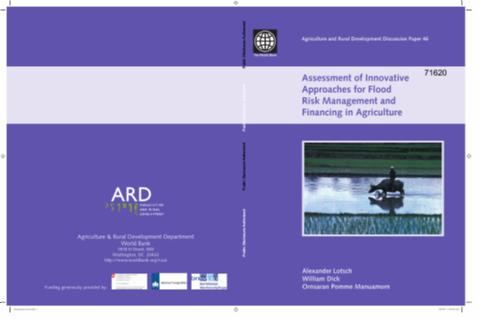Resource information
Floods are a major source of risk for the agricultural sector. Flood risk in the agricultural sector primarily arises from river flooding, flash floods, and coastal flooding. The impacts of floods can result in sizable agricultural damages at the local level. Floods in agricultural zones expose agricultural producers, agricultural supply chains, rural financial institutions (such as agricultural banks), and governments to financial risks due to the loss of crops, delinquency on seasonal production loans, damage to infrastructure and loss of public revenues. The costs associated with these damages are often absorbed by households directly or governments that provide compensation to agricultural producers in the aftermath of catastrophic flood events. Rural financial institutions also absorb the cost of floods through loan rescheduling or, in catastrophic cases, loan cancellation. In many developing countries, floods are dealt with in a reactive, rather than proactive, manner and little is done to be financially prepared for a catastrophic outcome of floods. Going forward, government and donors can play an important role to facilitate the development of risk spreading mechanisms in general and agricultural flood insurance in particular. First, this includes investment in the generation of public goods to support disaster risk reduction and recovery, risk management, and ultimately insurance applications. Second, awareness building and risk education are essential for better risk management and insurance. In that vein, identifying and assessing flood risk is critical first steps. Third, many of the technologies described here have applications beyond insurance, including for better planning, risk reduction, early warning, and disaster response. Insurance can complement such activities, but is only viable if carried out jointly as part of a broader risk management framework. Fourth, more research and technical assistance is needed to develop simple and financially viable products for flood risk transfer at aggregate levels; there is increasing demand expressed for such products from flood-prone countries. Finally, donors and government can support international and regional centers involved in flood modeling and facilitate a platform that convenes the technical expertise required for flood risk insurance development. Several of such centers and core expertises were identified through this work.


